Although he is long gone, Andrew Jackson is certainly not forgotten, and his image continues to be a part of American life and memory. In advertisements, comic strips, movies, popular songs, and twenty-dollar bills, Old Hickory remains one of our country’s most recognizable historical figures.
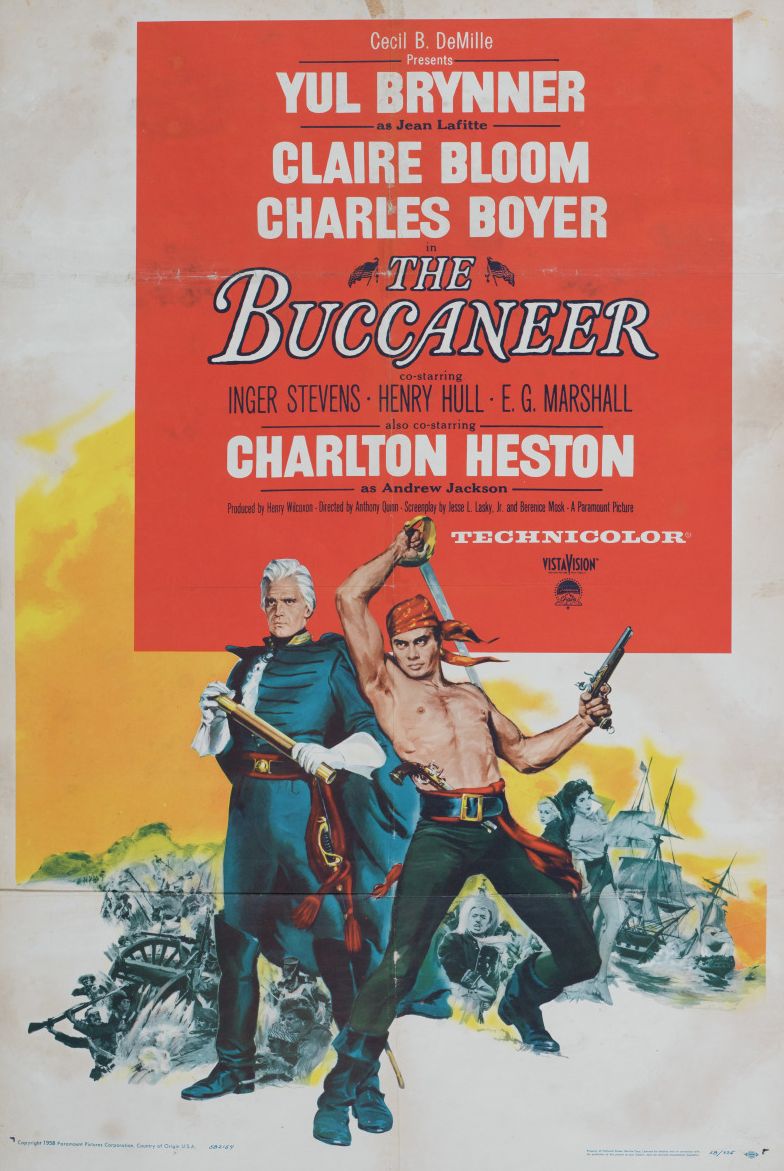
One-sheet film poster for The Buccaneer
1958; offset lithograph
by Paramount Pictures Corporation, distributor
The Historic New Orleans Collection, Don Lee Keith New Orleans in Film Collection, gift of Teresa Neaves, 2011.0300.8
The actor Charlton Heston portrayed General Andrew Jackson opposite Yul Brynner as Jean Laffite in the 1959 remake of The Buccaneer. Heston had already portrayed Old Hickory in a 1953 film, The President's Lady, which dramatized Jackson's marriage to Rachel Donelson Robards.
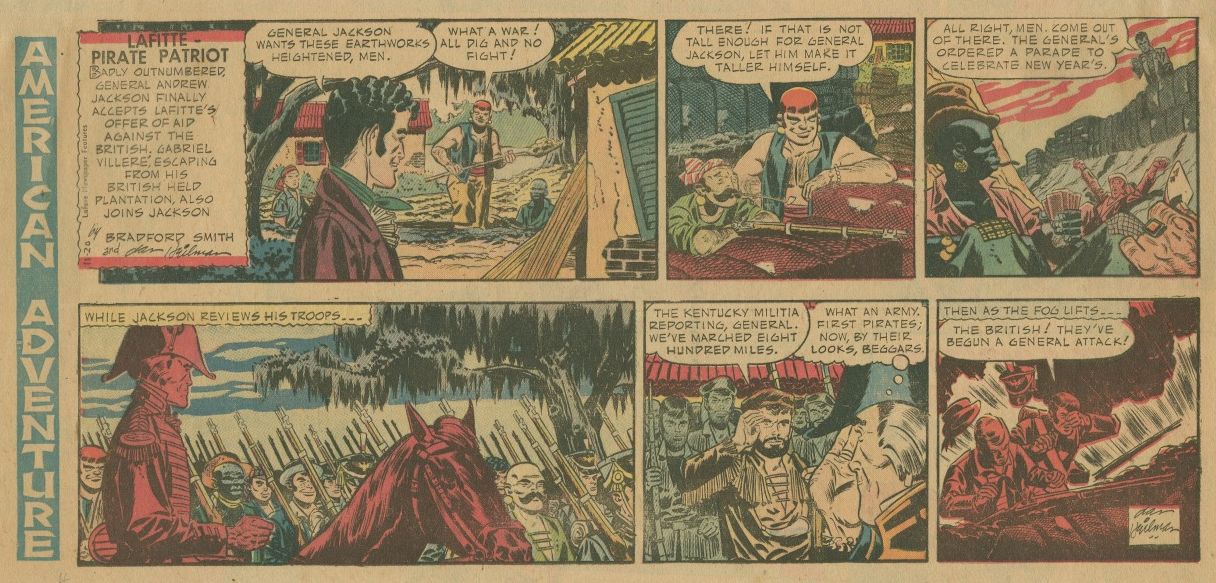
American Adventure comic strip
1949; color halftone
by Dan Heilman, cartoonist; Bradford Smith, author; Lafave Newspaper Feature, distributor
The Historic New Orleans Collection, gift of Boyd Cruise and Harold Schilke, 1953.37.3
The American Adventure comic strip by Bradford Smith and Dan Heilman ran in newspapers from 1949 to 1951. This installment dramatizes the contribution of Jean Laffite's Baratarian pirates to Jackson's defense of New Orleans. Heilman went on in 1952 to become the first artist of the long-running Judge Parker comic strip.
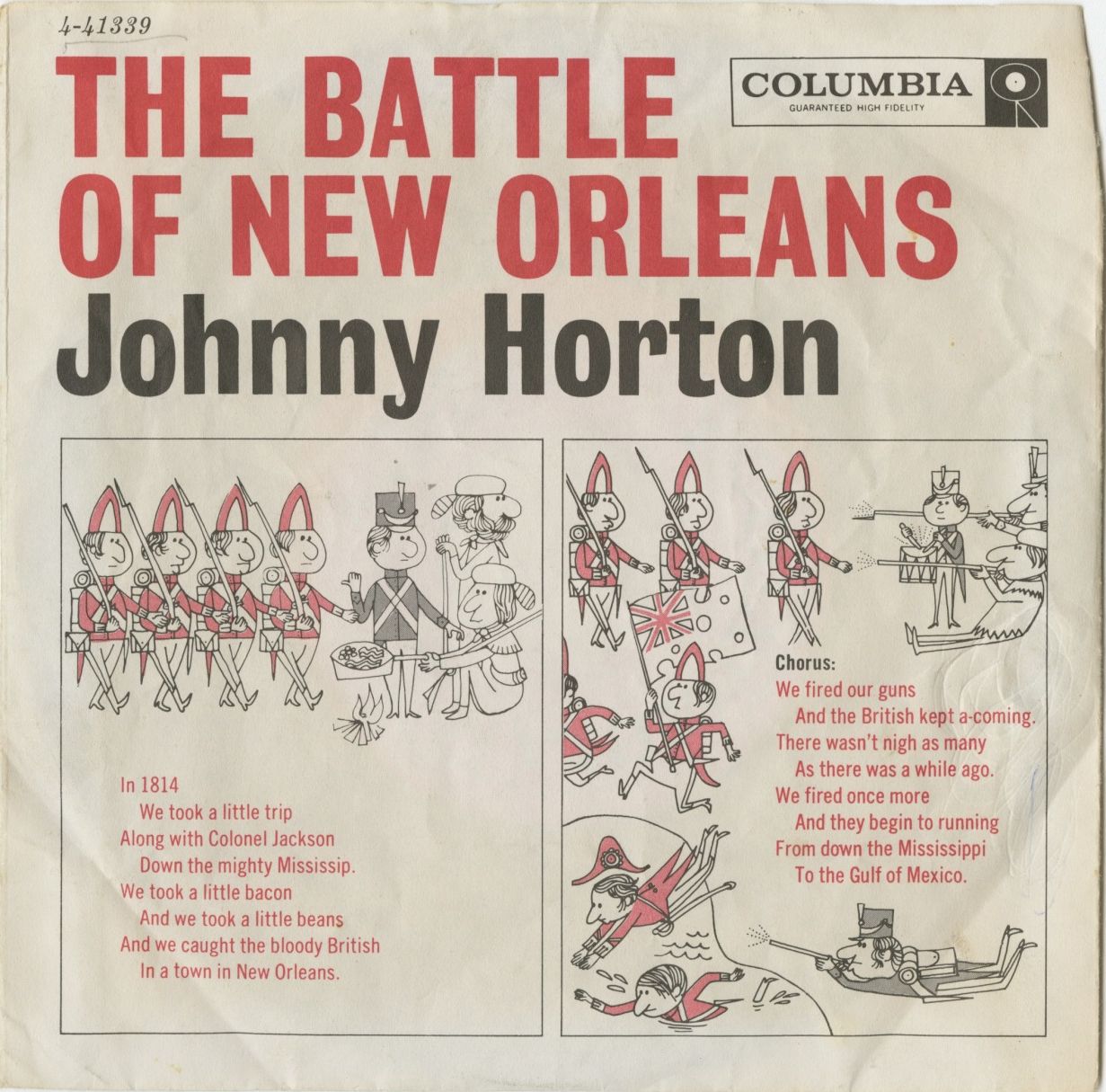
45-rpm record of Johnny Horton's "Battle of New Orleans"
1959; vinyl, paper
by Columbia Records Corporation, distributor
The Historic New Orleans Collection, 2013.0004
Many Americans first learned about the Battle of New Orleans from this popular song written and arranged by Jimmy Driftwood and sung by Johnny Horton. The tune can still be heard on riverboats making the excursion from downtown New Orleans to the Chalmette National Battlefield.
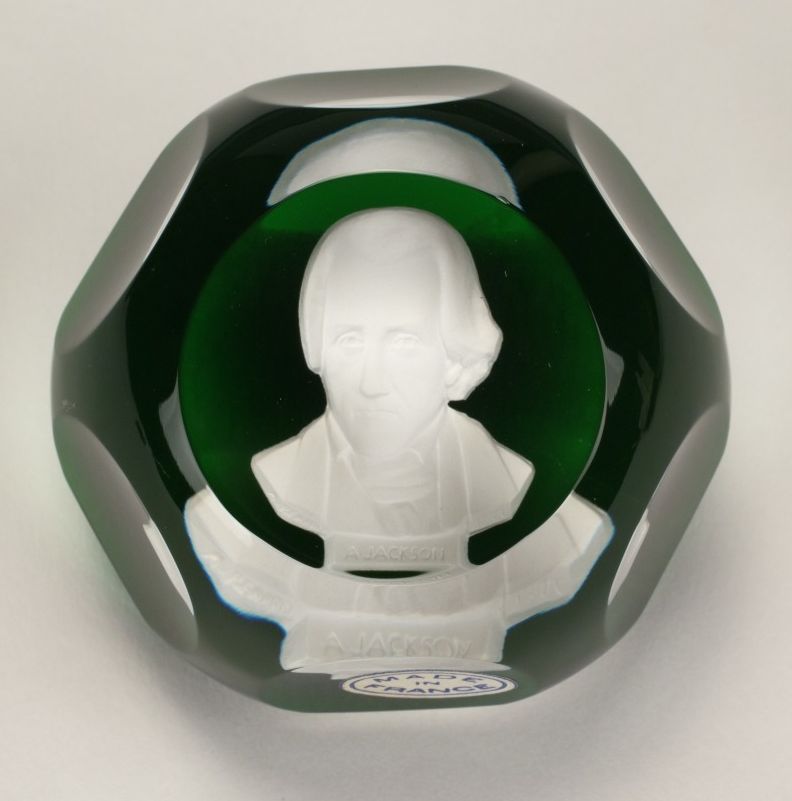
Andrew Jackson cameo paperweight
1971; crystal glass and cameo sulphide
by M. Renard, sculptor; Baccarat, manufacturer
The Historic New Orleans Collection, 2010.0019.6.8
Small glass paperweights with inlaid portraits were produced in France, England, and the United States in the nineteenth century. This twentieth-century example comes from Baccarat, a producer of crystal glass in the Lorraine region of eastern France.
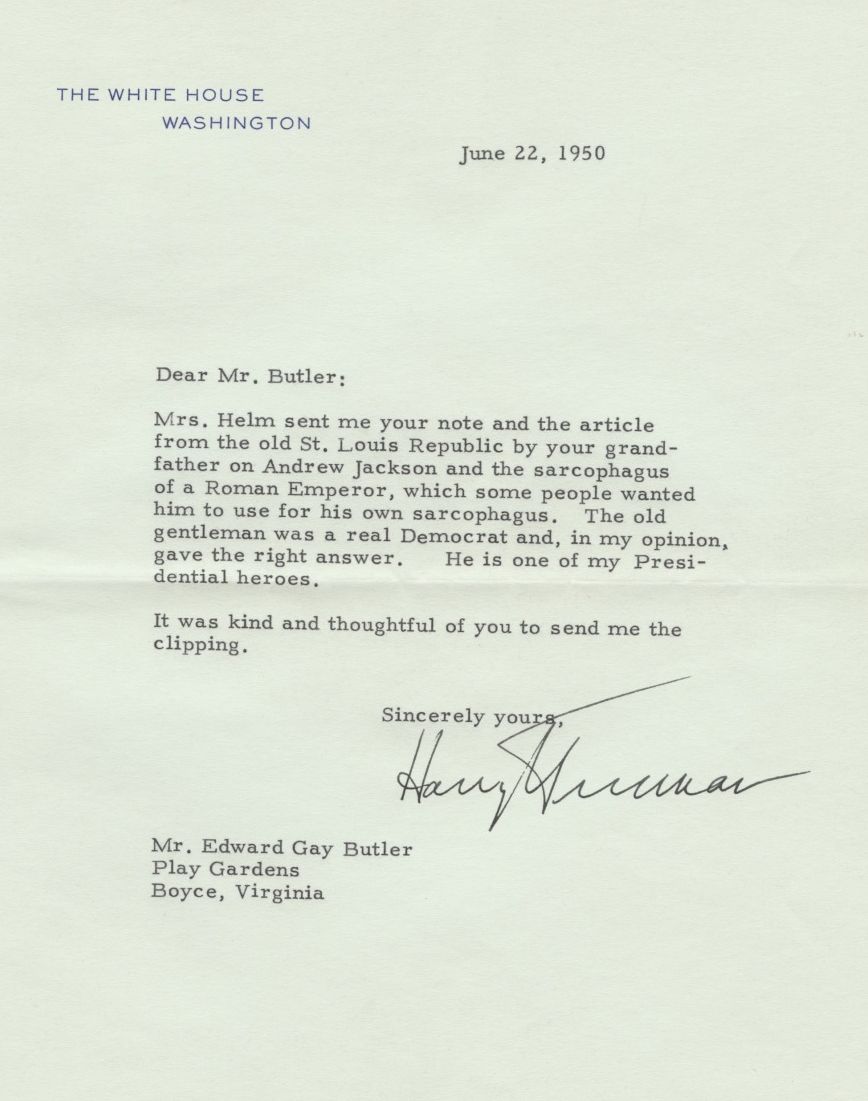
Letter by President Harry S. Truman regarding Andrew Jackson
June 22, 1950; typescript letter
The Historic New Orleans Collection, gift of Richard C. Plater Jr., MSS 102, 87-57-L.4
President Truman refers to the story of Commodore Jesse Duncan Elliot presenting President Jackson with an ancient Roman sarcophagus with the declaration that the famous general should eventually rest in "an Emperor's coffin." Jackson politely refused, noting that such funerary magnificence was out of step with "the simplicity of our republican institutions, and the plainness of our republican citizens, who are the sovereigns of our glorious Union."
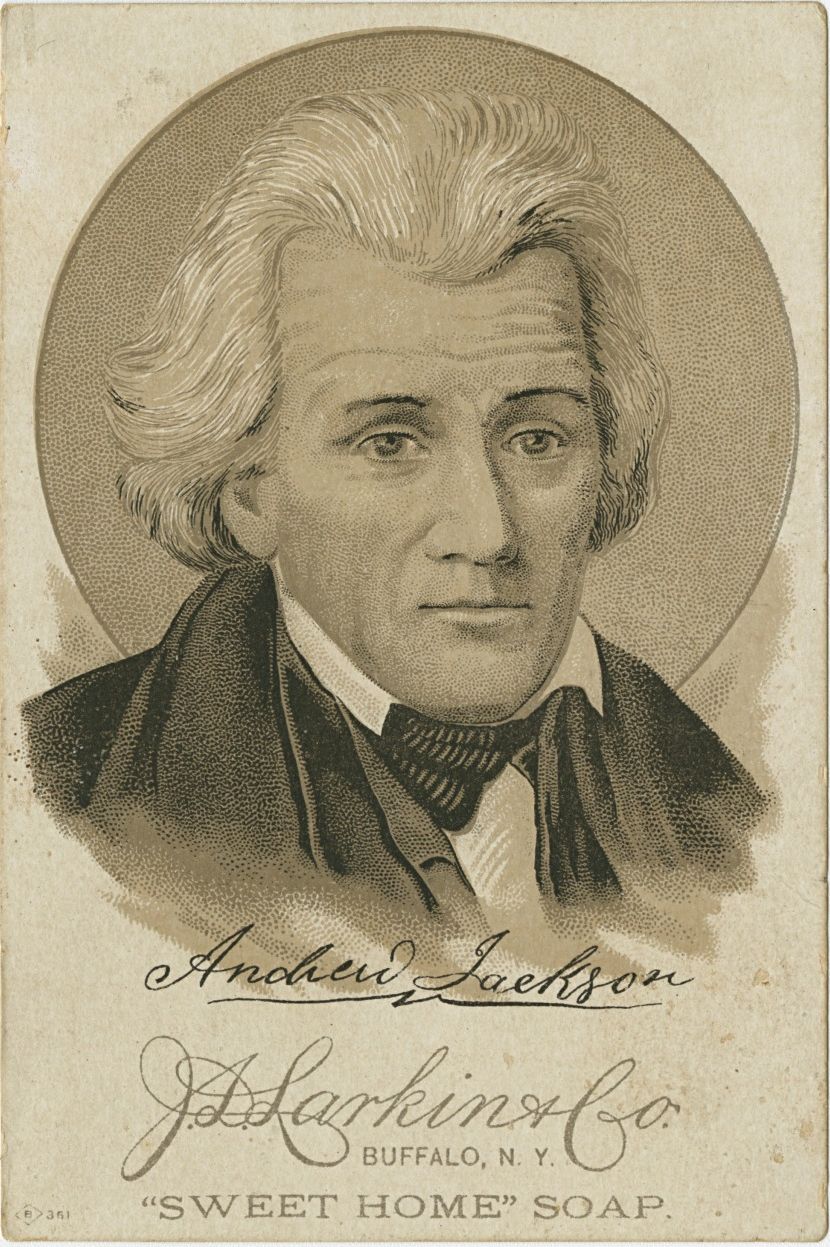
Trade card for Sweet Home Soap
ca. 1895; lithograph
The Historic New Orleans Collection, gift of Boyd Cruise and Harold Schilke, 1959.160.16
Old Hickory's likeness lent prestige and reliability to late-nineteenth-century consumer products ranging from tea and soap to cotton thread and cigarettes.
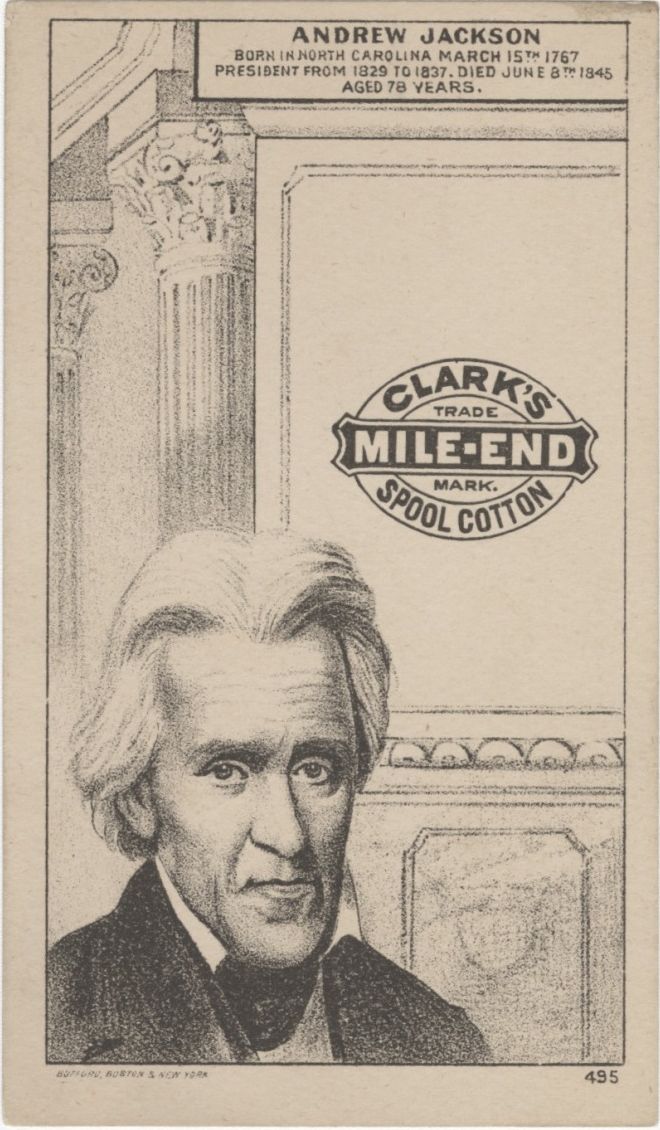
Trade card for Clark’s Mile-End Spool Cotton
ca. 1885; lithograph
by J. H. Bufford’s Sons, lithographer
The Historic New Orleans Collection, 1982.217
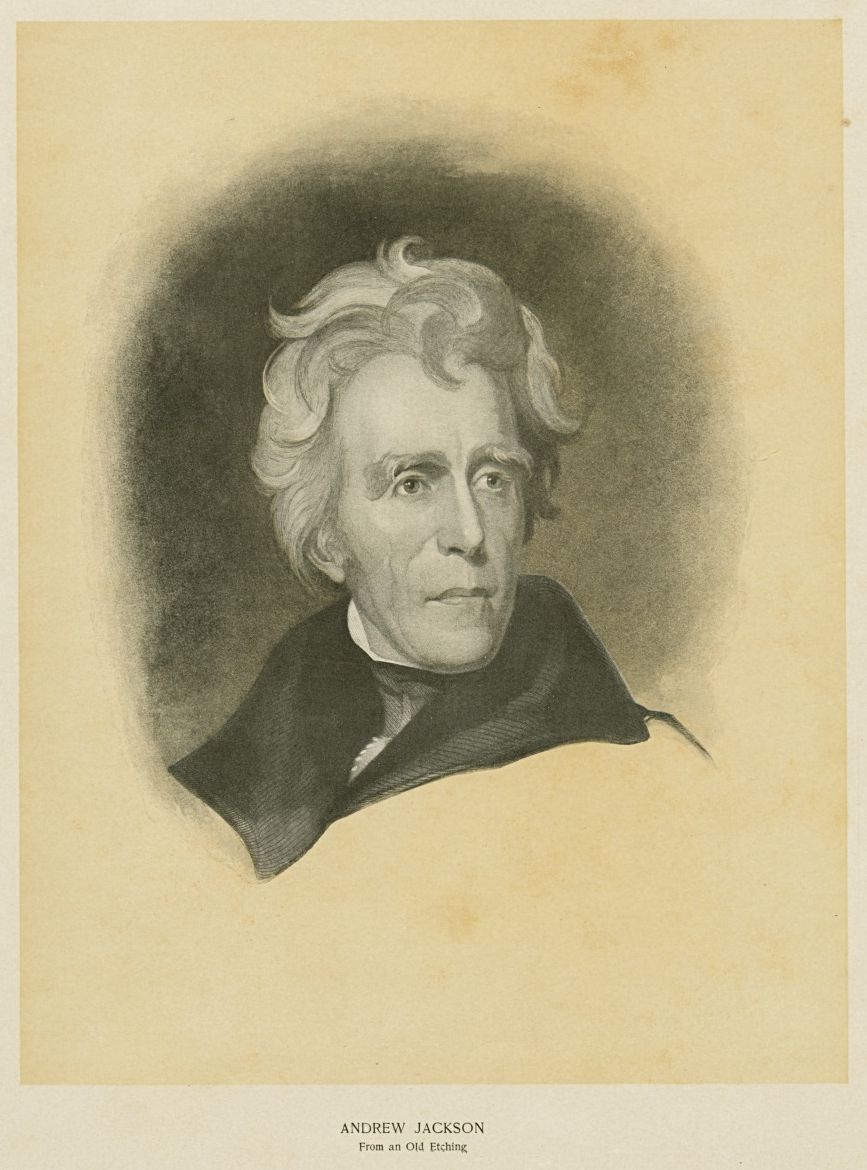
Print based on Thomas Sully’s 1824 portrait of Andrew Jackson
ca. 1950; halftone
The Historic New Orleans Collection, 1974.25.5.77
This modern print is perhaps based on an 1852 engraving by Thomas B. Welch (1814–1874) that was in turn based on an original circa-1824 painting by Thomas Sully (1783–1872). Most Americans will recognize it as the prototype for the portrait featured on the twenty-dollar bill. Jackson has graced that banknote since 1928, when his portrait replaced that of Grover Cleveland.
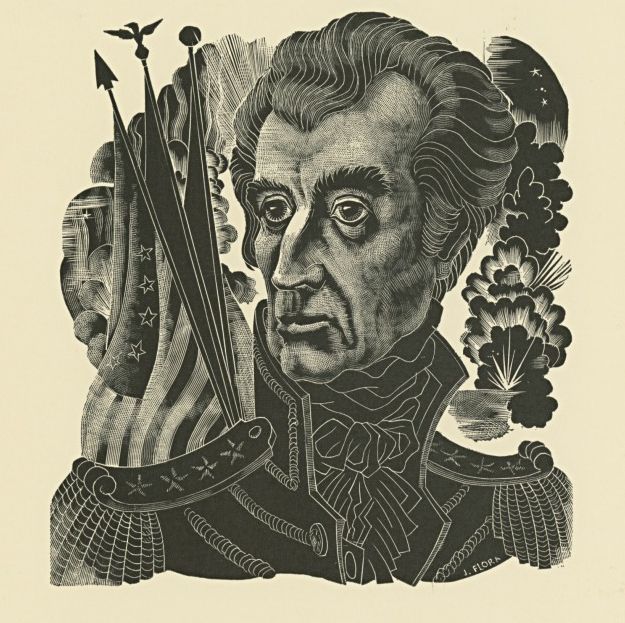
Old Hickory
ca. 1940; wood engraving
by James Flora, printmaker
The Historic New Orleans Collection, 1970.18.2
James Flora (1914–1998) was a book and magazine illustrator who is best known for the album covers he designed for Columbia and RCA Victor in the 1940s and 1950s. His impressionistic portrait of Andrew Jackson surrounds the general with martial imagery and conveys a stern, resolute nature.
